Overview
To establish a long-term strategy for your winery, it is essential to define your vision and goals. Conduct thorough market research, establish operational excellence, develop direct-to-consumer strategies, and implement continuous evaluation processes. Wineries with clear goals and a compelling brand narrative are significantly more likely to succeed.
Industry insights reveal that those adopting structured planning and adapting to consumer trends experience substantial revenue increases. This underscores the importance of a strategic approach in navigating the complexities of the wine market.
Introduction
Crafting a successful winery encompasses far more than the mere production of exquisite wines; it demands a strategic vision that informs every decision and action. Establishing a long-term strategy enables wineries to define their unique value proposition while remaining agile in response to evolving consumer trends and market demands. However, the journey toward developing this robust plan is not without its challenges.
How can wineries effectively align their goals with operational practices while navigating the complexities of consumer preferences and maintaining financial health? This guide delineates five essential steps to empower wineries in constructing a sustainable strategy that guarantees growth and resilience in an ever-changing landscape.
Define Your Winery's Vision and Goals
Begin by assembling your team to build a long-term strategy for winery that envisions the future of your establishment over the next 5 to 10 years. Engage in discussions that tackle key questions such as:
- How can we build a long-term strategy for winery that defines the unique value we provide?
- How do we want our customers to perceive our brand as we build a long-term strategy for winery?
- What do we need to achieve to build a long-term strategy for winery?
Once a clear vision is established, it is essential to translate it into specific, measurable goals to build a long-term strategy for winery. For instance, if your ambition is to be recognized as a leading organic producer, set a target to increase organic beverage sales by 30% within three years. This method not only clarifies your direction but also helps to build a long-term strategy for winery by aligning your team’s efforts.
Meticulously document these goals to build a long-term strategy for winery and ensure they are communicated effectively throughout your organization. This practice fosters alignment and motivation, which are essential to build a long-term strategy for winery success. Industry insights indicate that wineries that set clear financial targets and growth objectives are more likely to build a long-term strategy for winery success, as many report significant revenue increases when they implement structured goal-setting practices.
Enocap's extensive advisory services, including demand generation strategies and club optimization, can support this process by providing customized strategies that drive direct-to-consumer sales and enhance your brand narrative. As Jaime Hiraishi, co-owner of a successful wine bar, emphasizes, having a focused vision can lead to substantial changes and improvements in business operations.
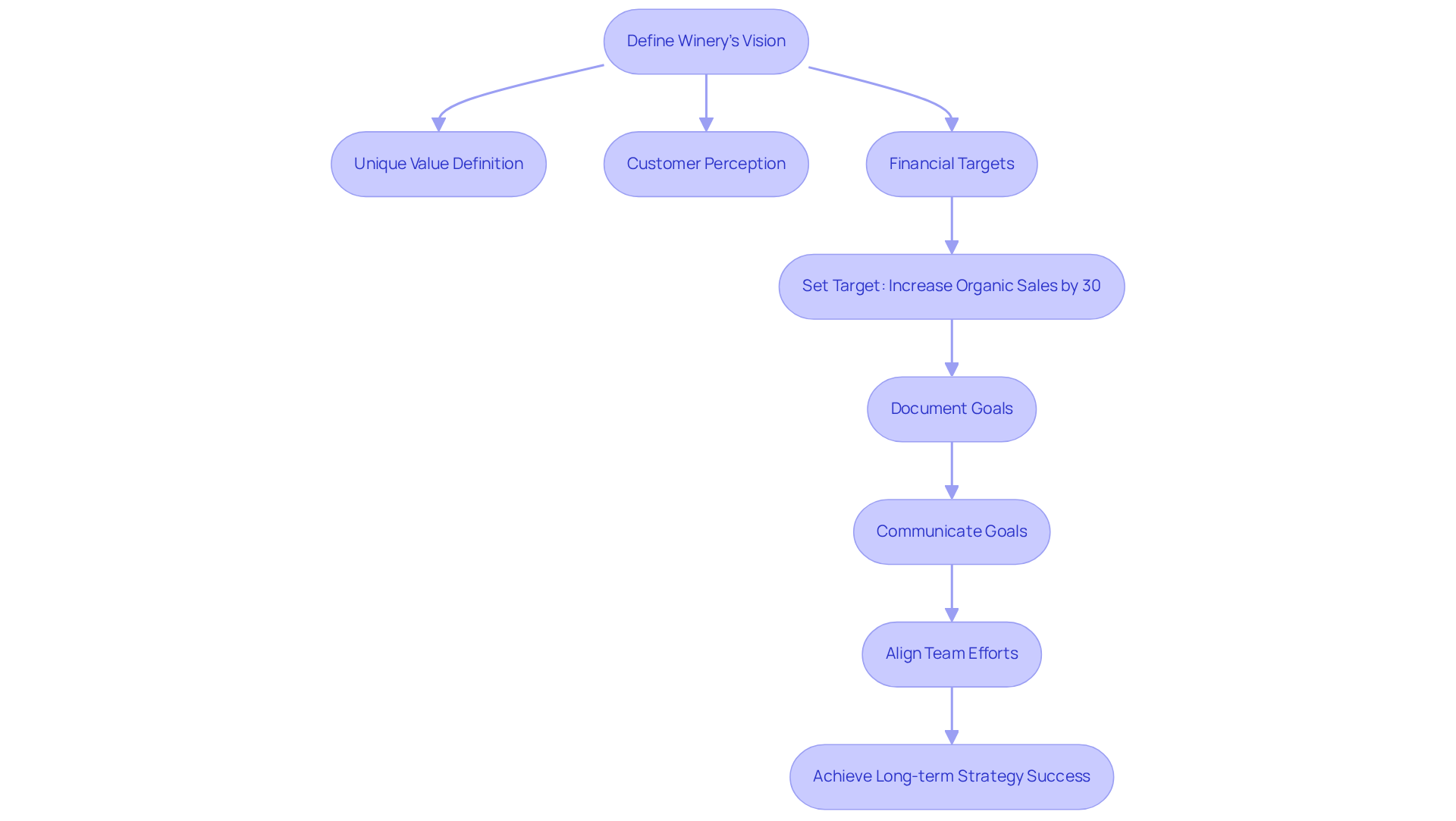
Conduct Market Research and Analyze Consumer Trends
Begin by pinpointing your target market segments through a combination of surveys, focus groups, and industry reports. This data collection should focus on , purchasing behaviors, and emerging trends. Analyzing competitors will also provide insights into their strengths and weaknesses. Key areas to concentrate on include:
- Demographics: Understand the age, income, and lifestyle of your ideal customers. Notably, Millennials and Gen Z are increasingly driving demand for ethical sourcing and sustainable practices, making it essential to tailor your offerings accordingly. Leveraging Enocap's expertise can help you develop targeted marketing strategies that resonate with these demographics.
- Preferences: Identify the types of beverages your target audience favors, their preferred purchasing channels, and their price sensitivity. The increase of low-intervention and organic beverages indicates a movement towards healthier choices, especially among younger individuals. Enocap can assist in crafting compelling brand stories that align with these preferences, enhancing customer loyalty.
- Trends: Stay alert to shifts in buying patterns, such as the growing interest in organic and sustainable beverages, as well as the popularity of no- and low-alcohol alternatives. The organic beverage market is anticipated to expand considerably, highlighting a strong opportunity for producers that align with these values. Additionally, storytelling in wine marketing is crucial for engaging consumers, as they are drawn to brands that convey rich histories and compelling narratives. Enocap's strategic capital planning, including options for debt, equity, or acquisition, can further assist your business in navigating these trends effectively.
Compile your findings into a comprehensive report that outlines both opportunities and threats in the market. This analysis will serve as a foundation for informed strategic decisions, which will help you build a long-term strategy for your winery to adapt and thrive in a competitive landscape.
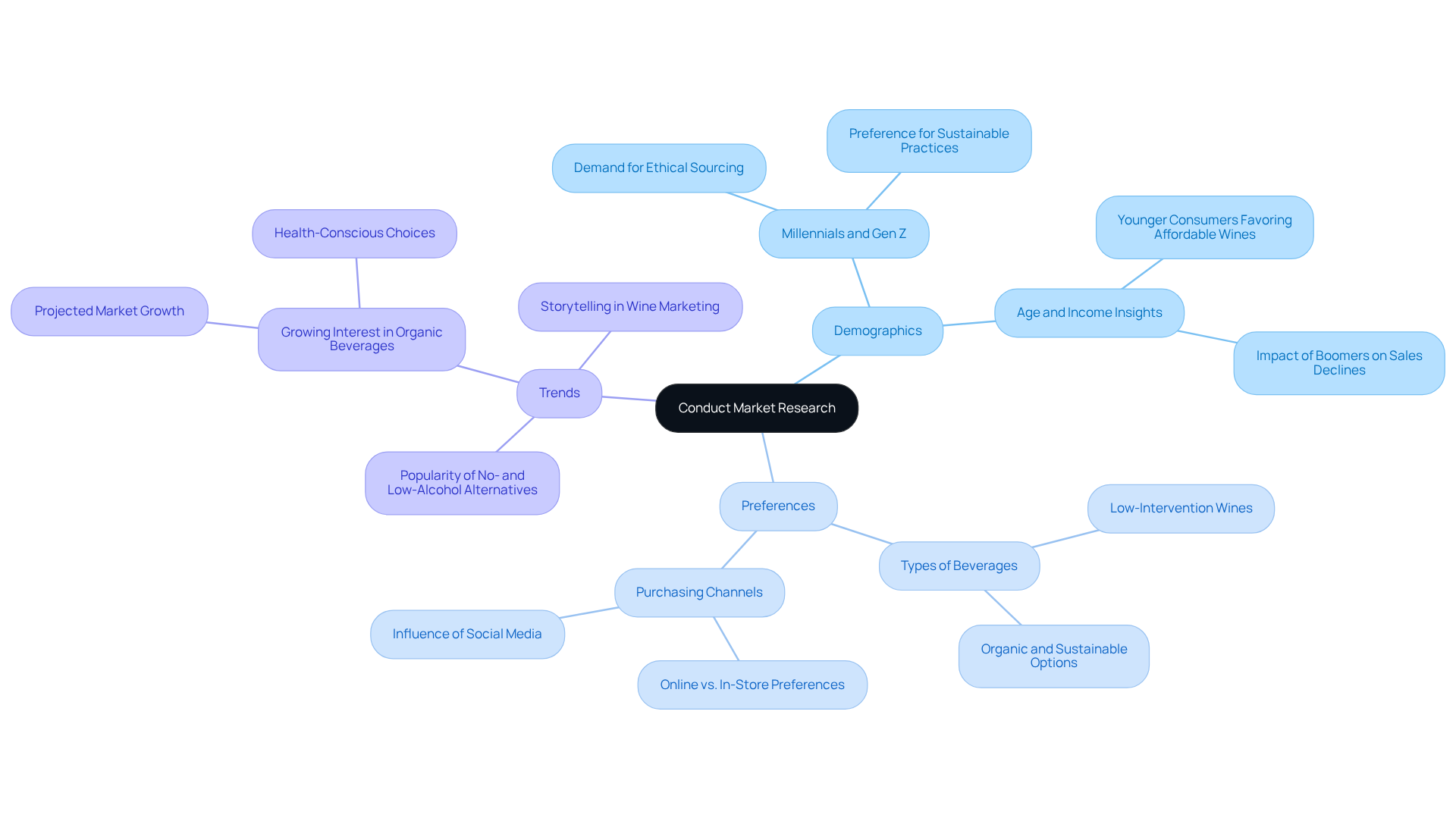
Establish Operational Excellence and Financial Health
Begin by thoroughly evaluating your current operational processes to pinpoint areas ripe for enhancement. Concentrate on the following key aspects:
- Production Efficiency: Streamline operations to minimize waste and elevate product quality. Implementing lean manufacturing principles can significantly boost output while reducing costs.
- Inventory Management: Adopt robust systems to meticulously monitor stock levels, ensuring optimal inventory turnover and minimizing holding costs. Techniques such as just-in-time inventory can be particularly effective in managing resources efficiently.
- Financial Health: Conduct regular reviews of financial statements to maintain a vigilant eye on cash flow, profitability, and debt levels. This proactive approach enables to financial plans.
Establish key performance indicators (KPIs) to measure success in these areas. For instance, track production costs per bottle and set ambitious targets for gross margin percentages. Regularly reviewing these metrics will help ensure alignment with your financial objectives, enabling informed decision-making and fostering long-term sustainability.
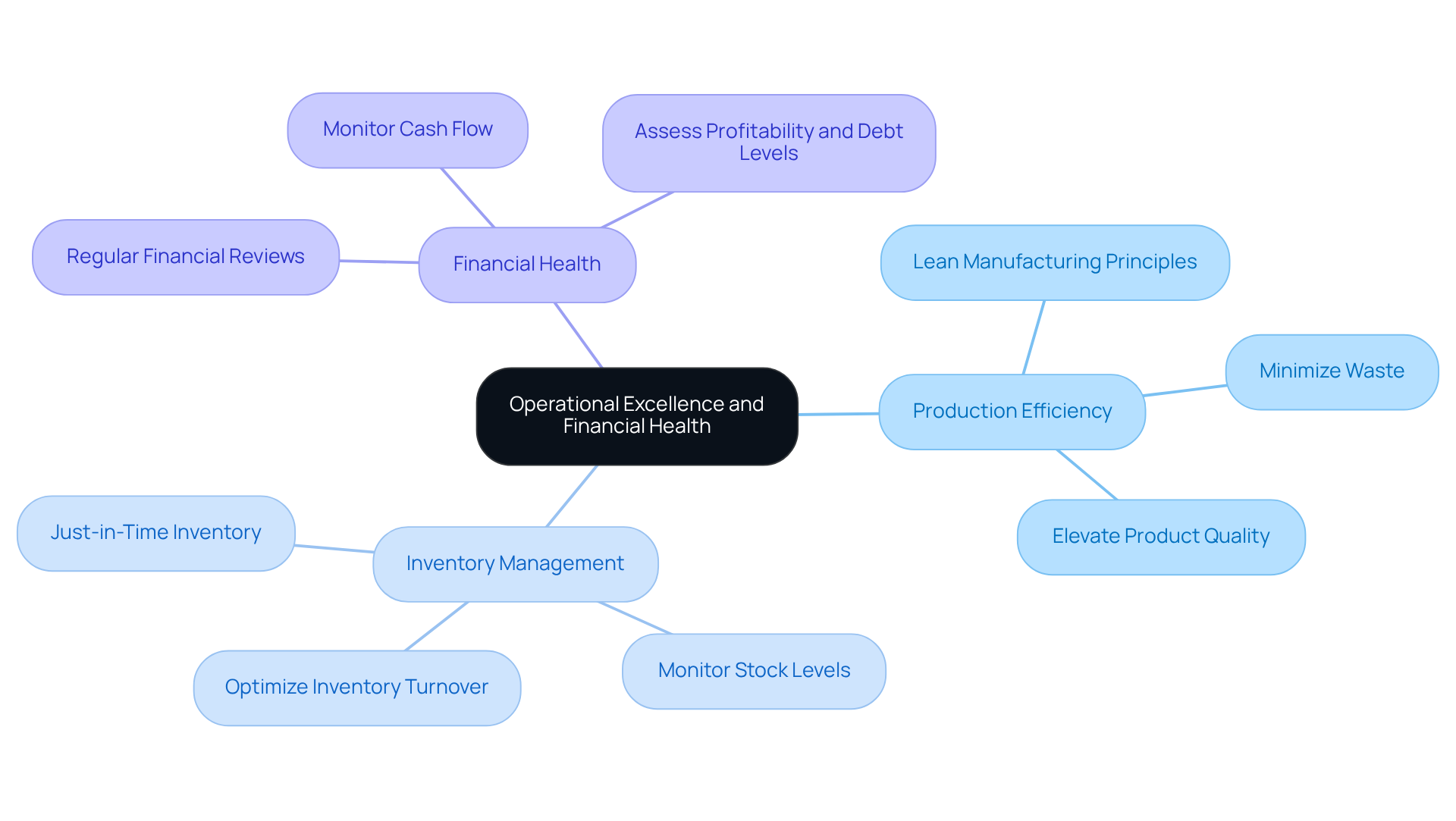
Develop Direct-to-Consumer Strategies and Brand Narratives
To effectively develop your direct-to-consumer (DTC) strategy, focus on the following key elements:
- Create an Engaging Website: Your website should not only showcase your wines but also narrate your brand story. Incorporate an online store to facilitate seamless purchasing experiences for customers, as this is crucial for driving e-commerce growth. Proven results show that wineries that build a long-term strategy for winery and leverage effective online strategies have achieved up to 191% growth in e-commerce sales.
- Utilize Social Media: Leverage platforms like Instagram and Facebook to engage with customers, share your unique story, and promote special offers. Visual storytelling can significantly enhance brand identity and consumer engagement, transforming casual buyers into loyal club members.
- Create a Beverage Club: Form a club that offers unique advantages, such as discounts and early access to new releases. This fosters loyalty and promotes repeat purchases, with 27% of new club memberships originating through digital channels.
Your should encapsulate your establishment's distinct history, values, and mission. Use storytelling to forge emotional connections with your audience, emphasizing what sets your wines apart. For instance, share the inspiring story behind your vineyard's founding or highlight your commitment to sustainable practices.
Successful vineyards understand that authentic storytelling can drive sales and enhance customer loyalty. For example, Wente Vineyards, the oldest continuously-operated family-owned vineyard in the U.S., has effectively maintained its legacy through compelling narratives that resonate with consumers. Additionally, vineyards must build a long-term strategy for winery that recognizes the significance of consistent branding across all DTC channels to establish a cohesive identity. By crafting a narrative that reflects your establishment's essence and defining your unique value proposition, you can create a lasting impact on your audience and elevate your brand's presence in the competitive wine market. Furthermore, integrating strategic capital planning into your growth initiatives ensures that you have the resources needed to thrive for generations.
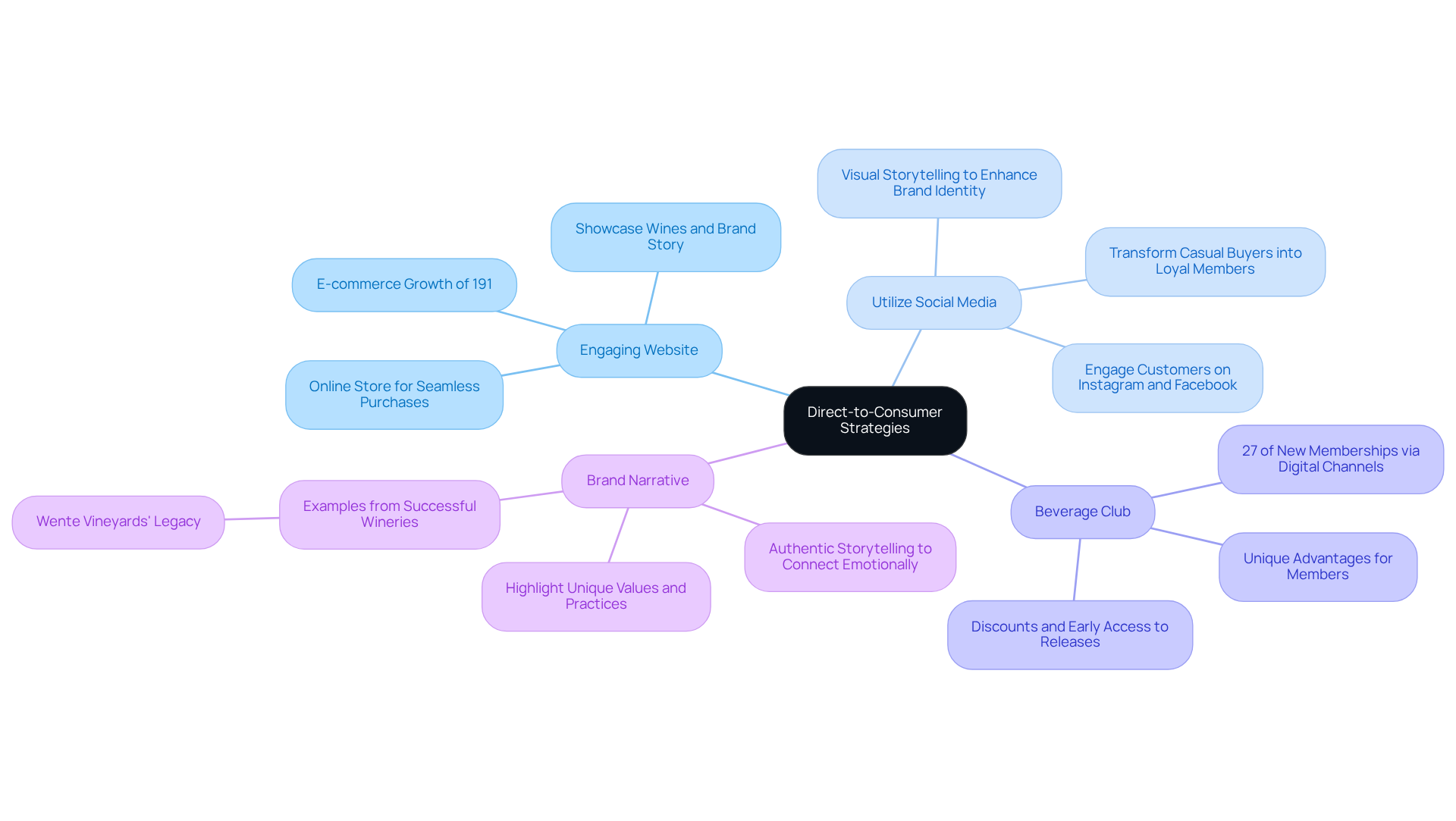
Implement Continuous Evaluation and Adaptation Processes
Establish a routine for evaluating your winery's performance to build a long-term strategy for the winery that aligns with the goals set in the initial planning phase. This process should encompass regular reviews of financial performance, sales data, and customer feedback to gauge , especially as we aim to build a long-term strategy for the winery. Furthermore, modifying marketing approaches based on consumer feedback and new market trends is essential to build a long-term strategy for the winery, ensuring alignment with current preferences while effectively utilizing brand storytelling to connect with customers. Actively gathering input from staff and stakeholders will help pinpoint areas for improvement and innovation, which can be achieved by building a long-term strategy for the winery through strategic capital planning for debt, equity, or acquisition opportunities.
Establishing a feedback loop is crucial to build a long-term strategy for the winery by facilitating quick modifications to your approaches. For instance, if a specific wine is underperforming in sales, conduct a thorough analysis to identify the underlying reasons. This may involve exploring promotional strategies or considering product adjustments. Such a proactive approach not only enhances responsiveness but also enables you to build a long-term strategy for the winery, strengthening your establishment's agility and competitiveness in a dynamic market.
Statistics indicate that online wine sales increased by 32% during the first year of the pandemic, highlighting the need for vineyards to adjust rapidly to evolving purchasing habits. This change emphasizes the significance of digital promotion and client engagement approaches, as vineyards that effectively employed these tools were able to overcome the challenges presented by the pandemic successfully. Additionally, case studies demonstrate that vineyards that build a long-term strategy for the winery can significantly enhance their marketing effectiveness and overall performance by employing data-driven strategies to analyze sales information and customer feedback. By continuously refining your approach based on market feedback—leveraging social media and email marketing for consumer insights—your winery can cultivate lasting relationships with consumers and drive sustainable growth.
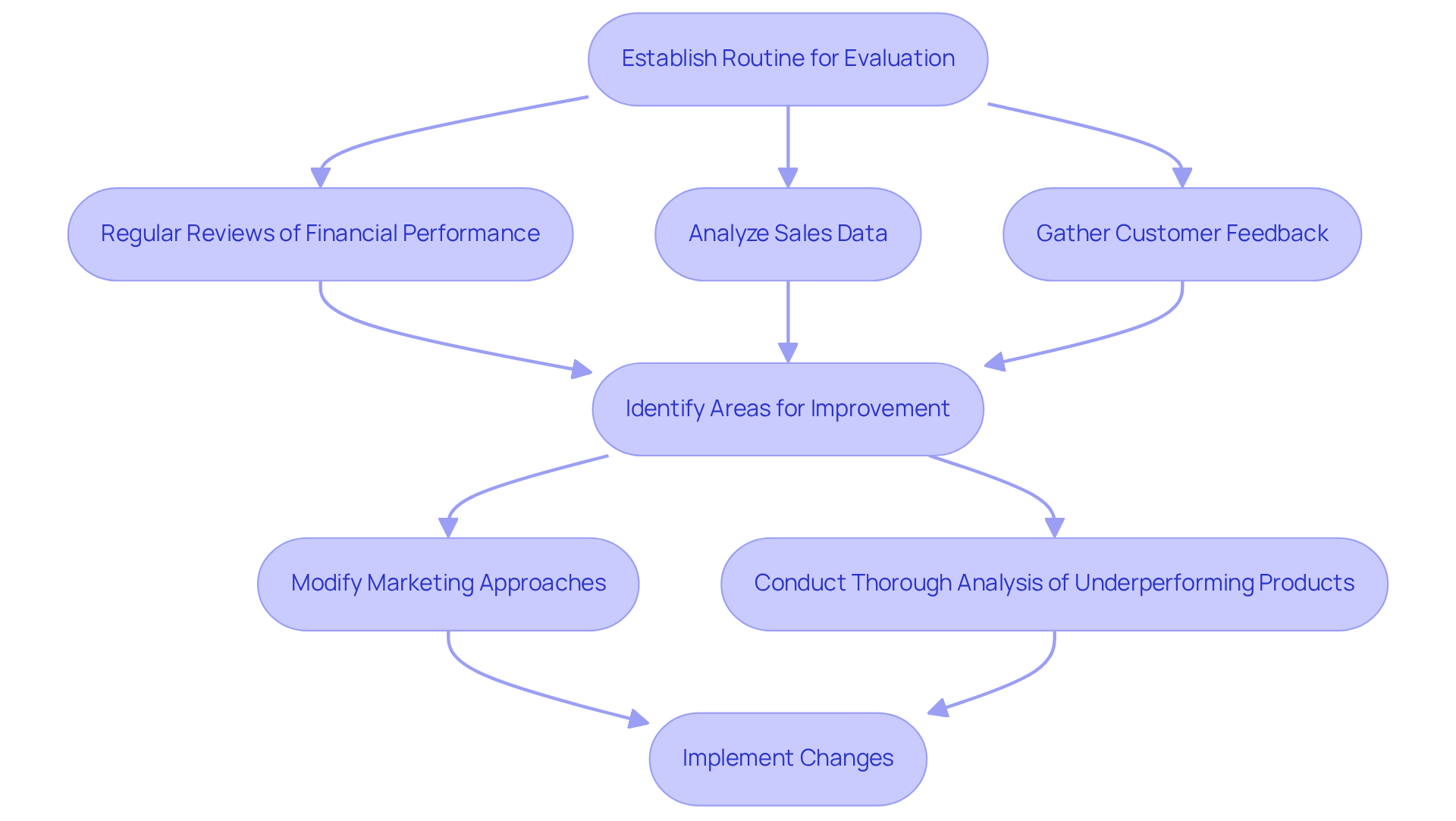
Conclusion
Building a successful long-term strategy for a winery necessitates a comprehensive approach that encompasses:
- Vision
- Market analysis
- Operational excellence
- Direct-to-consumer tactics
- Continuous evaluation
By clearly defining the winery's vision and establishing measurable goals, wineries can create a roadmap that not only guides their growth but also aligns team efforts. Engaging in thorough market research enables wineries to grasp consumer preferences and trends, which is crucial for tailoring offerings and enhancing brand loyalty.
Operational efficiency and financial health are equally paramount, ensuring that resources are utilized effectively and that the winery remains profitable. Crafting a compelling brand narrative and leveraging direct-to-consumer strategies can significantly elevate customer engagement and drive sales. Furthermore, implementing a routine for evaluation and adaptation guarantees that the winery remains responsive to market changes and consumer feedback, fostering long-term sustainability.
In conclusion, the journey to establishing a thriving winery is rooted in strategic planning and the capacity to adapt. By embracing these steps, wineries can not only navigate the complexities of the industry but also cultivate lasting relationships with their customers. The emphasis on storytelling, operational excellence, and consumer insights underscores the importance of a holistic approach in building a resilient winery that withstands the test of time. Taking decisive action now to implement these strategies can lead to a prosperous future, ensuring that the unique essence of each winery is celebrated and sustained for generations to come.
Frequently Asked Questions
What is the first step in building a long-term strategy for a winery?
The first step is to assemble your team to define a long-term vision for the winery, considering its future over the next 5 to 10 years, and engaging in discussions about key questions related to unique value, brand perception, and financial targets.
How can a winery translate its vision into actionable goals?
A winery can translate its vision into specific, measurable goals by setting targets that align with its ambitions, such as aiming for a certain percentage increase in organic beverage sales within a specified timeframe.
Why is documenting goals important for a winery's long-term strategy?
Documenting goals is essential as it ensures clear communication throughout the organization, fosters alignment and motivation among the team, and contributes to the overall success of the winery.
What role does market research play in developing a winery's strategy?
Market research helps identify target market segments, consumer preferences, purchasing behaviors, and emerging trends, which are crucial for making informed strategic decisions.
What demographics should wineries focus on, according to the article?
Wineries should focus on demographics such as Millennials and Gen Z, who are increasingly driving demand for ethical sourcing and sustainable practices.
What consumer trends are important for wineries to consider?
Wineries should consider trends such as the growing interest in organic and sustainable beverages, as well as the popularity of no- and low-alcohol alternatives.
How can Enocap assist wineries in building their strategies?
Enocap can provide advisory services, including demand generation strategies, club optimization, and strategic capital planning, to help wineries enhance their brand narrative and drive direct-to-consumer sales.
What should wineries do with the findings from their market research?
Wineries should compile their findings into a comprehensive report that outlines market opportunities and threats, which will serve as a foundation for informed strategic decisions.




